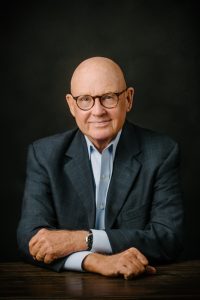The curtain fell on a splendid production. The superintendent couldn’t have been prouder of the chair of the school board’s new Strategic and Operational Planning Committee, and the chair couldn’t have been more pleased. She’d just presented an overview of the upcoming year’s budget in the board’s April business meeting. Comfortably wielding the remote, she made a highly informative and entertaining PowerPoint presentation that acquainted her board colleagues with the revenue and expenditure assumptions that had driven the budget preparation process, highlighted innovation initiatives receiving special attention in the budget document (for example, pilot testing personalizing learning in one of the high schools), and described how the budget addressed certain high-priority issues that the board had identified at its second budget work session a couple of months earlier (for example, building security). Since the board meeting was televised, the committee chair’s presentation was directed not only at her board colleagues, but also at the wider public whose support during the coming year’s campaign to renew the district’s property tax levy would be critical.
This true story is even more dramatic when you understand that the committee chair had been very reluctant to accept the board president’s appointment to head the new Strategic and Operational Planning Committee, protesting that she didn’t have the necessary financial expertise, and that her initial reaction to the superintendent’s suggestion that she present the budget overview at the April board meeting was an emphatic thumbs-down. But this really board-savvy superintendent persisted, promising to provide her the support that would guarantee her success on stage. And he and his associate superintendent for planning delivered on the promise: not only developing the PowerPoint slides for the committee chair to present, but also conducting two rehearsal sessions aimed at making her totally comfortable with the presentation.
I shared this story with participants in the workshop I presented a couple of weeks ago for AASA’s Aspiring Superintendents Academy – as an example of one of the hats that every board-savvy superintendents wears: “Theatrical Producer.” The context was our discussion of the board-savvy superintendent’s role as “Chief Process Designer” – taking the lead in mapping out processes for engaging board members in a meaningful way in shaping their governing decisions and judgments. We discussed the fact that meaningful engagement tends to transform board members into satisfied owners of their governing work who make for more reliable partners. The Theatrical Producer role is the aspect of process design that focuses on board members’ ego satisfaction, and you all know that robust egos are typical of the kind of ambitious, high-achieving people who serve on public and nonprofit boards. Wearing the Theatrical Producer hat, a board-savvy superintendent always asks if there is a way she can design a particular process such as preparing the annual operating plan and budget that will provide one or more of her board members with an ego satisfying experience.
By the way, the board-savvy superintendent in the above true story was well aware that the ego-satisfying experience he designed for the strategic and operating planning committee chair would achieve two important outcomes: turn her into a reliable ally while also educating board members and the general public.






